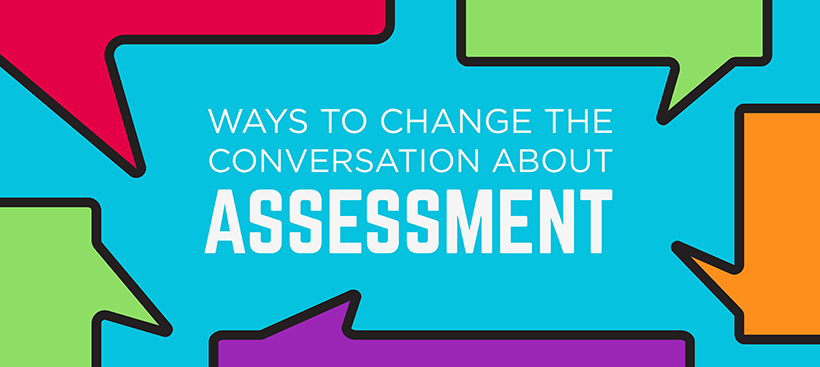This post was written by NCTE member Chris Hass, past member of the NCTE Standing Committee on Literacy Assessment.
A few years ago, I read Jeanette Winter’s book, The Librarian of Basra: A True Story from Iraq (2005), to my third-grade students as a way to build excitement for the year of incredible reading we were about to embark on. I expected this story of Alia Muhammad Baker bravely saving her library from being destroyed by war would support us as we moved into a rich discussion about the cultural and historical importance of books. Yet, after reading how Mrs. Baker secretly stowed thousands of library books into her trunk as the horrors of war quickly approached, the kids had other things on their minds.
“Mr. Hass, is that America bombing them?” someone asked.
“Yes, it is,” I answered.
“Why are we bombing them?” someone else followed.
“Well,” I said, “there was a group of terrorists who were so upset with America that they decided to do an awful thing. They overtook a couple of airplanes and crashed them into towers in New York City as well as a government building in Washington, DC. That happened on September 11, and we refer to it as 9/11.”
“Were they from Iraq—the people who crashed the planes?” someone else asked.
“Not really, no,” I answered. “But our government felt Iraq was part of the problem. They felt like Iraq was a place that helped the terrorists. They also believed Iraq had been making really dangerous weapons they weren’t supposed to be making.”
“Did they? Make the weapons?” they pressed.
“No,” I responded. “People were sent to look for them, but they didn’t find any.”
“So we bombed them for nothing?”
This is what can happen when we read a powerful book with a group of curious children. They are, by nature, meaning makers (Smith, 2006). Yet, despite the fact that children ask hundreds of questions at home each week (Frazier, Gelman, & Wellman, 2009), the instructional practices of classroom teachers often silence student voices (Hass, 2020), forcing them to spend far more time answering questions than asking them. As a child once bemoaned, “The trouble with school . . . is that it provides uninteresting answers to questions we have never asked” (Osborne, 2006, p. 2).
As literacy teachers, we know the potential of student-generated questions (SGQs). Teaching children to question a text helps them engage more deeply, read with added purpose, and begin to develop much-needed critical thinking skills. Furthermore, the questions our students generate provide an authentic demonstration of their learning, as compared with more traditional modes of assessment that narrow the scope of what counts as accuracy and growth (Allington, 2014; Duncan & Buskirk-Cohen, 2011). Equally important, when we support students in generating and seeking answers to their own questions, we ensure that they are empowered to share their unique voice, perspective, and identity, thus bolstering our efforts to root our assessments in culturally responsive practices.
How Do SGQs Fit into Our Current Practices?
In my classroom, student-generated questions were the norm for many of the things we read as a whole class, as well as in small groups and partnerships. For instance, our whole-class read-alouds were littered with opportunities for students to stop and share their thoughts with a partner. Many times, this space was framed as follows: “Stop and tell your partner something you’re wondering about right now. . . . Okay, let’s read on and see if we can figure it out.”
When reading assigned texts, such as a nonfiction article, I modeled how we could mark up the paper with the questions that naturally filled our heads as we sought to understand. Students learned to fill the margins with an endless stream of queries about vocabulary, characters, plot, and even decisions made by the author.
I largely tried to protect my students’ independent reading, as that was a time for simply enjoying a book without too many teacher-mandated expectations. That said, there were occasional times when I would ask students to stop during their reading and jot down any questions they had so we could revisit them later as a form of self-analysis of their current reading practices.
What Do We Do with the Questions Our Students Generate?
Student-generated questions provide an opportunity to support students in becoming increasingly metacognitive about their reading process. Displaying a sample of student-generated questions under the document camera (on separate slips of paper), I invited my kids to look for questions that sought out the same sort of information—for instance, questions that focused on a character’s actions, or questions that sought to understand why something just happened. After methodically grouping most of our questions and then generating labels for these groups, students were equipped to analyze their own questions to see where they tended to focus much of their attention while reading.
While this account reflects the practices I developed in my own classroom, the possibilities for how SGQs can be integrated into the literacy workshop and what we can do with this information are as endless as our imaginations. I invite you to play around with it and report back.
In Part 2, Alexa Quinn will detail what we can learn about our students’ reading, as well as our own instruction, from the types of questions our students ask.
References
Allington, R. L. (2014). What really matters for struggling readers: Designing research-based programs. Pearson.
Duncan, T., & Buskirk-Cohen, A. A. (2011). “Exploring learner-centered assessment: A cross-disciplinary approach.” International Journal of Teaching and Learning in Higher Education, 23(2), 246–259.
Frazier, B. N., Gelman, S. A., & Wellman, H. M. (2009). “Preschoolers search for explanatory information within adult–child conversation.” Child Development, 80(6), 1592–1611. https://doi.org/10.1111/j.1467-8624.2009.01356.x
Hass, C. (2020). Social justice talk: Strategies for teaching critical awareness. Heinemann.
Osborne, J. (2006). Message from the president. E-NARST News, 49(2), 1–2. https://narst.org/sites/default/files/2019-08/e-narstnews_2006_jul.pdf
Smith, F. (2006). Reading without nonsense (4th ed.). Teachers College Press.
Winter, J. (2005). The librarian of Basra: A true story from Iraq. Houghton Mifflin Harcourt.

Chris Hass is an assistant professor at James Madison University. Prior to this role, he spent twenty years as an early childhood and elementary classroom teacher, where he supported students in questioning everything. He can be reached at hasscl@jmu.edu.
It is the policy of NCTE in all publications, including the Literacy & NCTE blog, to provide a forum for the open discussion of ideas concerning the content and the teaching of English and the language arts. Publicity accorded to any particular point of view does not imply endorsement by the Executive Committee, the Board of Directors, the staff, or the membership at large, except in announcements of policy, where such endorsement is clearly specified.

